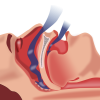Many people are unhappy with their smile because their teeth are out of line, or because they have gaps between their teeth. Others suffer from full-fledged functional disturbances when they talk or eat, on account of an altered bite. The causes? There are many possible reasons: the tongue pushing against the teeth, thumb-socking, blows or accidents that affect the jaw bones or actual divergences from normal development. The problem can be resolved in a number of different ways. The following article shows how.
Aligning the teeth and orthodontics
The problem of aligning the teeth can be solved through orthodontics, the branch of dentistry that studies the development and positioning and the jawbones, making it possible to correct any alterations.
Braces are used to remove any imperfections or anomalies tied to the mouth or the teeth while creating a facial profile that is pleasing to the eye and a proper chewing function. The braces, which can be either fixed or removable, shift the teeth into the correct position, channelling the growth of bone and teeth.
Aligning of teeth and dental braces
The most widely used braces are fixed models. Using small anchoring pieces called brackets, along with metal wires that connect the brackets to each other, the brace exert pressure on the teeth, bringing them in line.
As a rule, removable braces are used in the case of children, in order to guide the growth of the bones and influence muscle activity.
Transparent (or invisible) braces are used to resolve problems of teeth alignment. They can only be used in cases where the teeth are slightly out of line, and not for complex cases.
Veneers
If orthodontics is not the desired approach, then another method, and one that provides a very rapid, aesthetically perfect result, is the application of dental veneers.
Veneers are thin ceramic strips used to modify, in only a short amount of time, the form, colour, length and position of the front teeth by covering over defects that can include gaps between the teeth and discolouration.
This treatment cannot be used for problems of unaligned bites or crooked teeth, but it does provide excellent results, in terms of appearance, in just a few sessions, as celebrities from the world of entertainment, who swear by this technique, know perfectly well.
Aligning the teeth: veneers or orthodontics?
Whichever of these two treatments is chosen, the decision should reflect the patient’s needs. If the goal is to straighten unaligned teeth that cause a problem which goes beyond appearance, then the solution must necessarily be orthodontics.
In order to achieve good results, it is best to begin this type of treatment when the patient is young, taking advantage of the growth stage. Once the therapy is completed, a retainer must be used to preserve the results achieved. But if the goal is to correct a defect in appearance alone, the dental veneers are an ideal solution, seeing that they guarantee the best possible appearance in a short period of time, explaining why they are the type of treatment favoured by adults.
To sum up, orthodontics is the right way to go when the teeth are in fine shape but crooked, and the patient has time for, and accepts the inconvenience of, an orthodontics treatment. Veneers are right: when the teeth are not in good shape (darkened, stained, chipped, broken) and the patient wants them to become good-looking in a week’s time, with perfect colours and forms.



